This post may contain affiliate links. Please read my disclosure.
Slow cooked for 24 hours in a temperature controlled water bath, this Sous Vide Pork Shoulder turns out tender, moist and juicy every time! Pair it with rice or potatoes, or pile it on sandwiches and tacos. This recipe is versatile and delicious!
If you haven’t tried cooking pork using the sous vide method yet, you’re missing out! It has become our favorite way to cook all different cuts of pork.

From sous vide pork loin, sous vide pork ribs to sous vide pork belly, the sous vide always yields tender results so you can say good-bye to dry pork!
While you need to plan ahead because of the long cooking time for this pork shoulder, I promise it’s worth the wait. Just like this sous vide pork butt or sous vide pork sirloin roast.
Once it’s cooked, you just need to slice or shred it and enjoy!
If you love this recipe, you’ll also love this sous vide pulled pork recipe!
Jump to:
What is Sous Vide?
Sous vide is basically a method of cooking using what is called an immersion circulator (i.e. the sous vide machine). This immersion circulator circulates water in a temperature controlled water bath at a certain temperature to perfectly cook your food every time.
Because the temperature doesn't change, and it keeps your meat (or dessert, veggies, etc.) at the same temperature, your risk of overcooking becomes very minimal.
To learn even more about sous vide cooking, head over and read "what is sous vide cooking and the benefits of sous vide cooking."
What is the Water Displacement Method?
The displacement method is where you slowly submerge a ziplock bag in water pushing the air out of the top of the bag (the bag should be slightly open at the top to allow air to escape).
Use a clip (I use sous vide magnets) to clip the bag to the side to keep it from floating and getting air and/or water inside.
Tools Used
You will also want to check out these posts on the best sous vide containers and the best sous vide bags for more information!
Want to Save This Recipe?
Enter your email & I'll send it to your inbox. Plus, get great new recipes from me every week!
By submitting this form, you consent to receive emails from Went Here 8 This.
More sous vide pork recipes
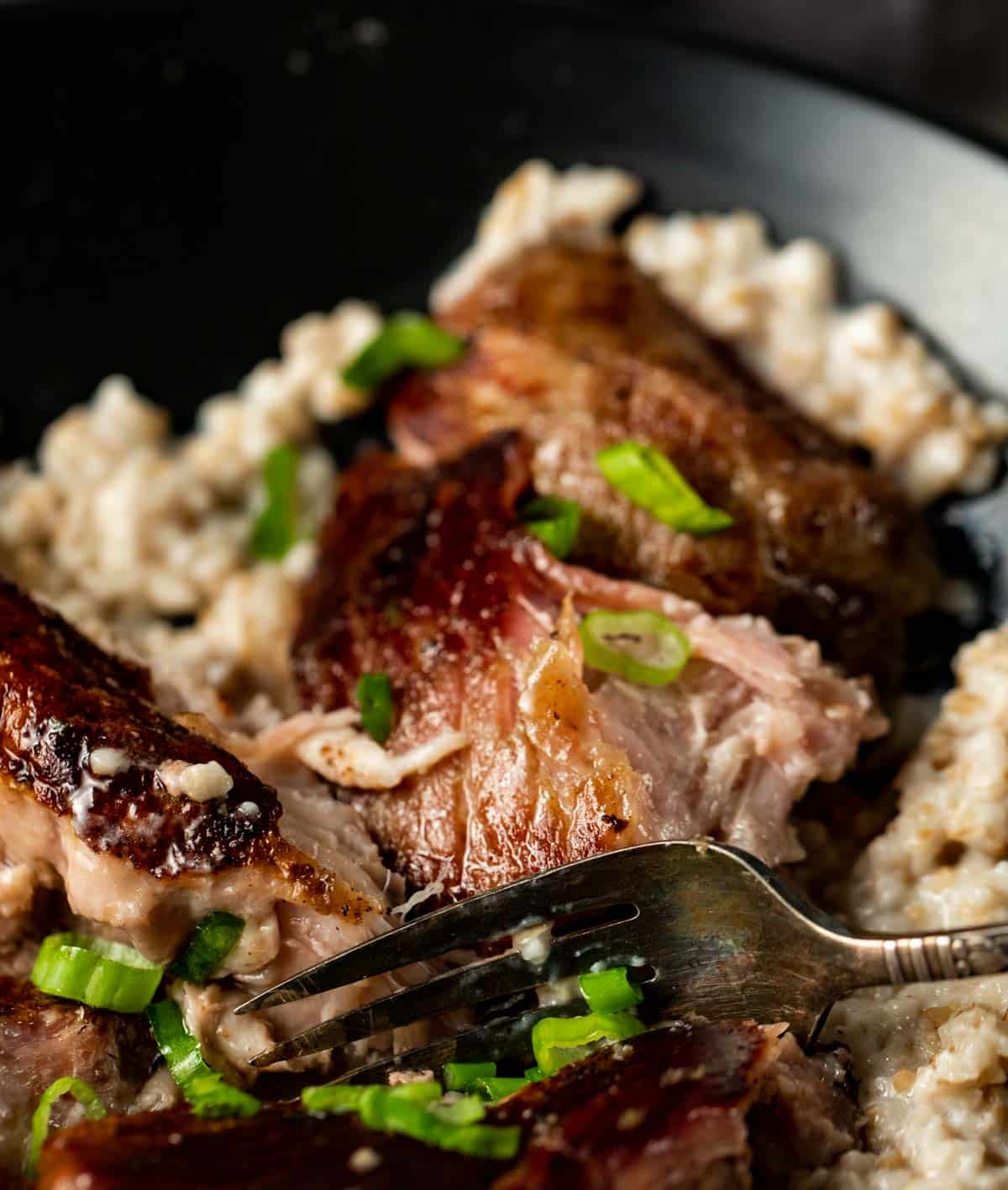
What is pork shoulder?
Pork shoulder (also called pork butt) is a relatively inexpensive cut of pork that’s usually fatty and tough with plenty of marbling. It’s perfect for cooking low and slow as this allows time for the tough connective tissue to break down, resulting in tender and juicy pork.
Why this recipe works
- Pork shoulder is a tough cut of pork, so it needs to be cooked low and slow in order for it to tenderize. The sous vide is the perfect method to do this!
- The controlled temperature of the water bath ensures your pork is cooked just the way you like it. You can have a sliceable or shreddable texture just by adjusting the temperature.
- Pork shoulder is large in size and cheaper than most other cuts of pork so it’s a budget friendly way to feed a crowd!
Ingredients
For the full list of ingredients and quantities, refer to the recipe card at the bottom of this post.
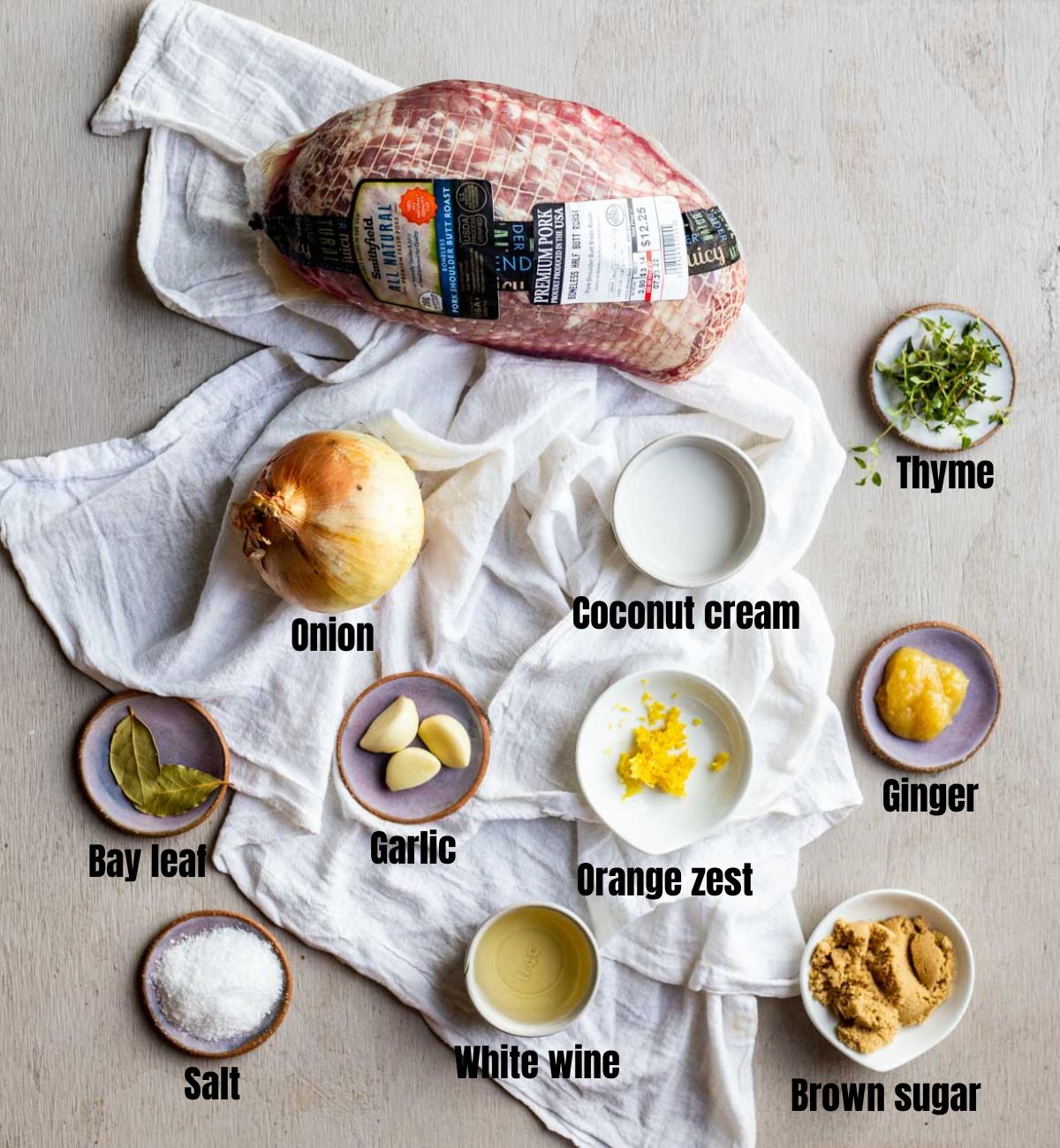
You’ll need a 3-5 pound pork shoulder (butt) roast for this recipe. You can use bone-in or boneless. Bone-in will be more flavorful but boneless is easier to shred and you will get more meat per pound.
The pork is sealed in a bag with liquid and seasonings including white wine, coconut cream, grated ginger and fresh thyme.
The wine helps tenderize the pork. I recommend using a dry white wine like sauvignon blanc. I don’t normally use wines sold as cooking wines as they don’t quite have the same depth of flavor.
The coconut cream will thicken the bag juice so it’s perfect for drizzling over the pork when served. You can also use coconut milk if you can’t find the cream.
Fresh ginger has a strong flavor that’s a little spicy and sweet. It has a much stronger taste than ground ginger, so stick with fresh. If you can’t find fresh ginger root, you can substitute with minced ginger.
I love the flavor of fresh thyme with pork. If you can’t find fresh, you can use dried thyme or you can substitute with fresh oregano.
Step by step instructions
Rub the pork with salt and let it sit, uncovered, in the fridge overnight.
Heat a sous vide water bath to 158F degrees.
Place the pork in a vacuum seal bag with the remaining ingredients. Seal the bag.
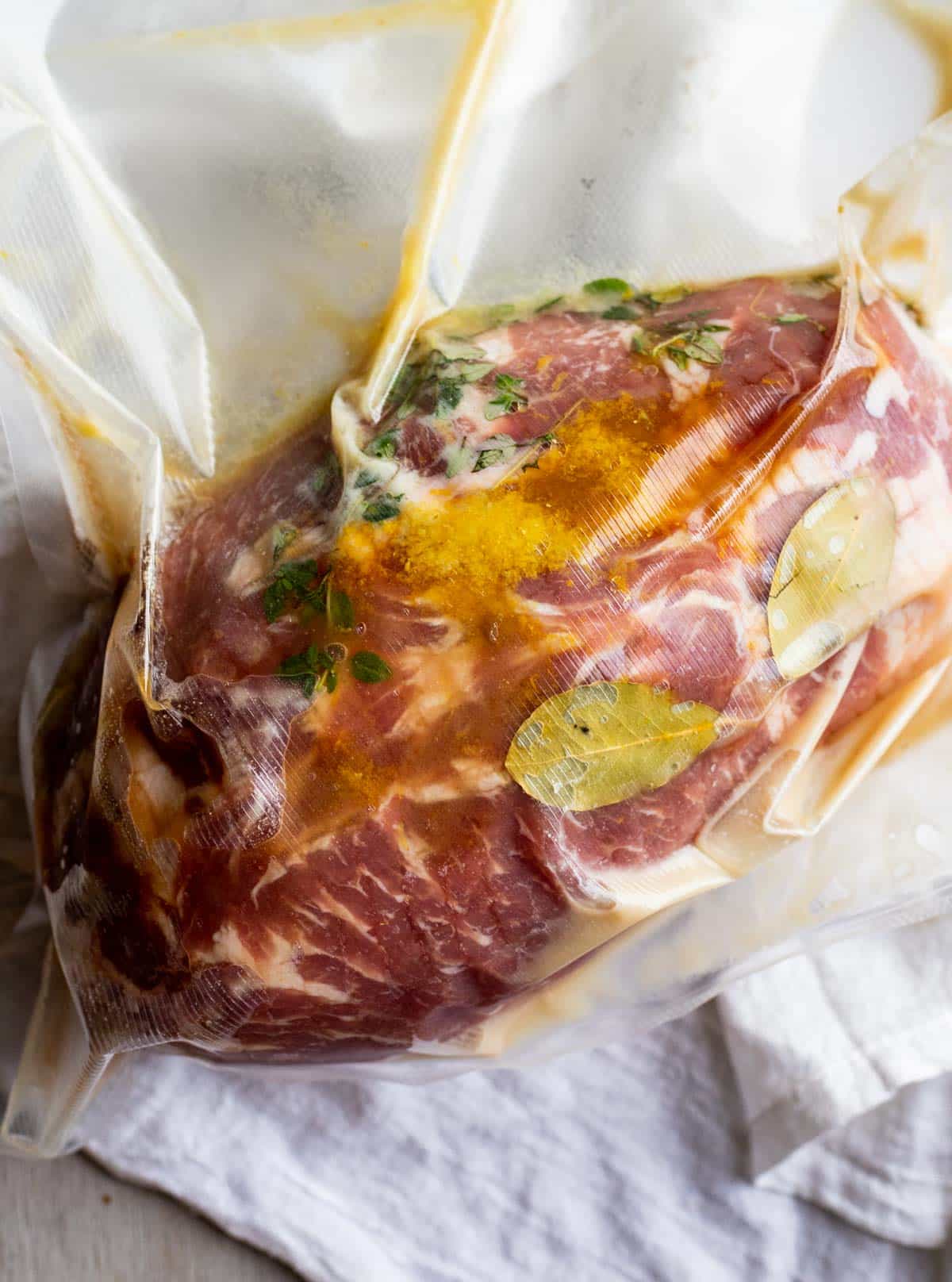
Cook for 24-28 hours.
Remove from bag, reserving bag juice, and pull/shred into chunks.
*If you want a browned crust on the pork, brown the outside in oil over medium high heat for 1 minute per side.
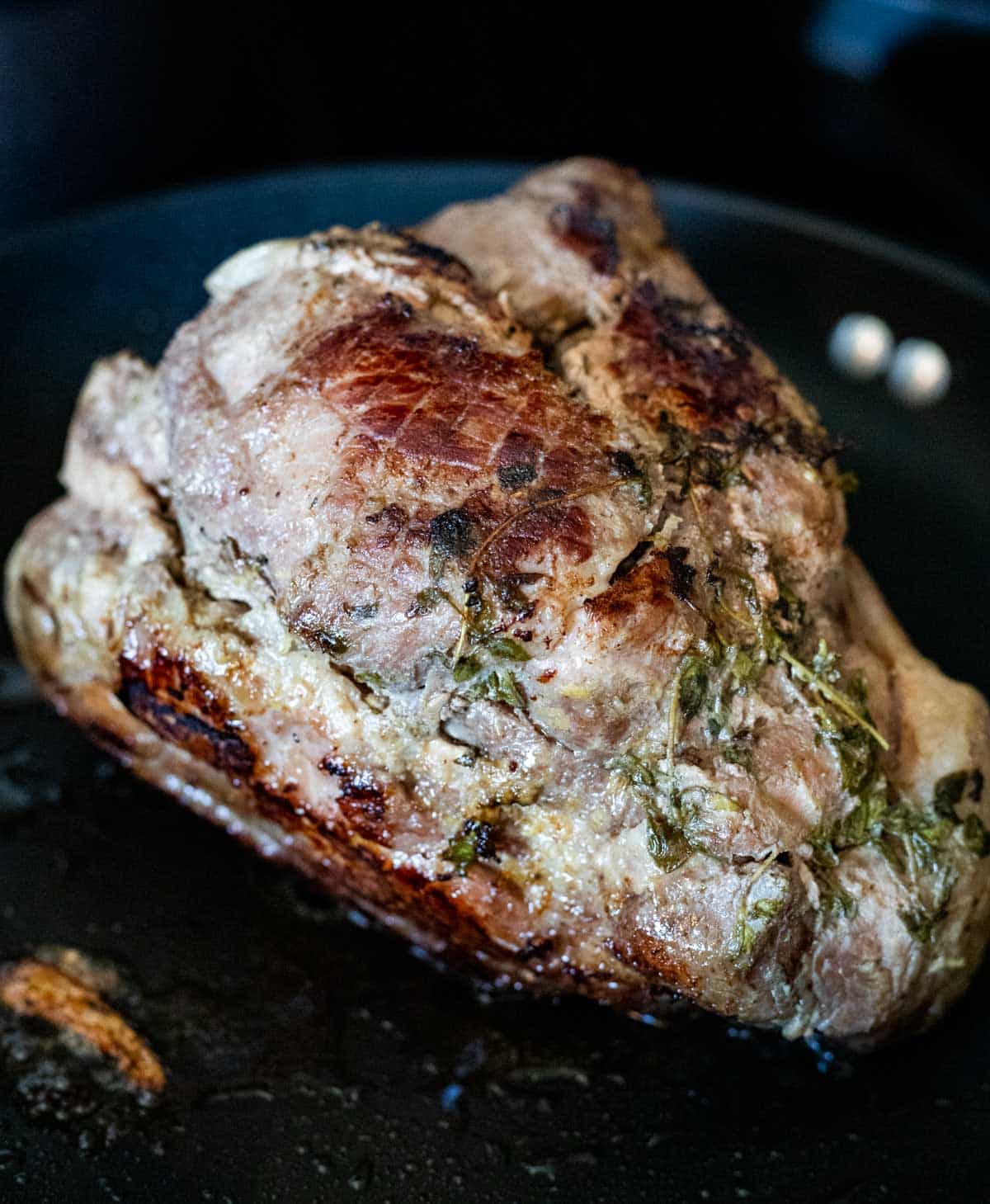
Serve drizzled with the bag juice (optional) over rice, polenta, potatoes, etc. Also great served on a sandwich or as tacos.
Expert tips
- Pork shoulders can be large, so you’ll want to buy one that fits in your water bath.
- Keeping bacteria out of the sealable bag is essential, so make sure you properly remove the air when you seal the bag.
- If air gets in the bag as the pork shoulder cooks, which may happen over such a long cooking time, just open the bag, let the air out and reseal it.
- If the pork shoulder starts to float in the water bath, use something heavy to weigh it down. I like to use a sous vide sinker weight.
- As the pork cooks for 24-28 hours, water may start to evaporate from the water bath. If this happens, just top up the bath with more water.
- While the pork is fully cooked when it comes out of the water bath, you may want to brown it to form a crust. Be sure to do this for just 1 minute per side so the pork doesn’t start to dry out.
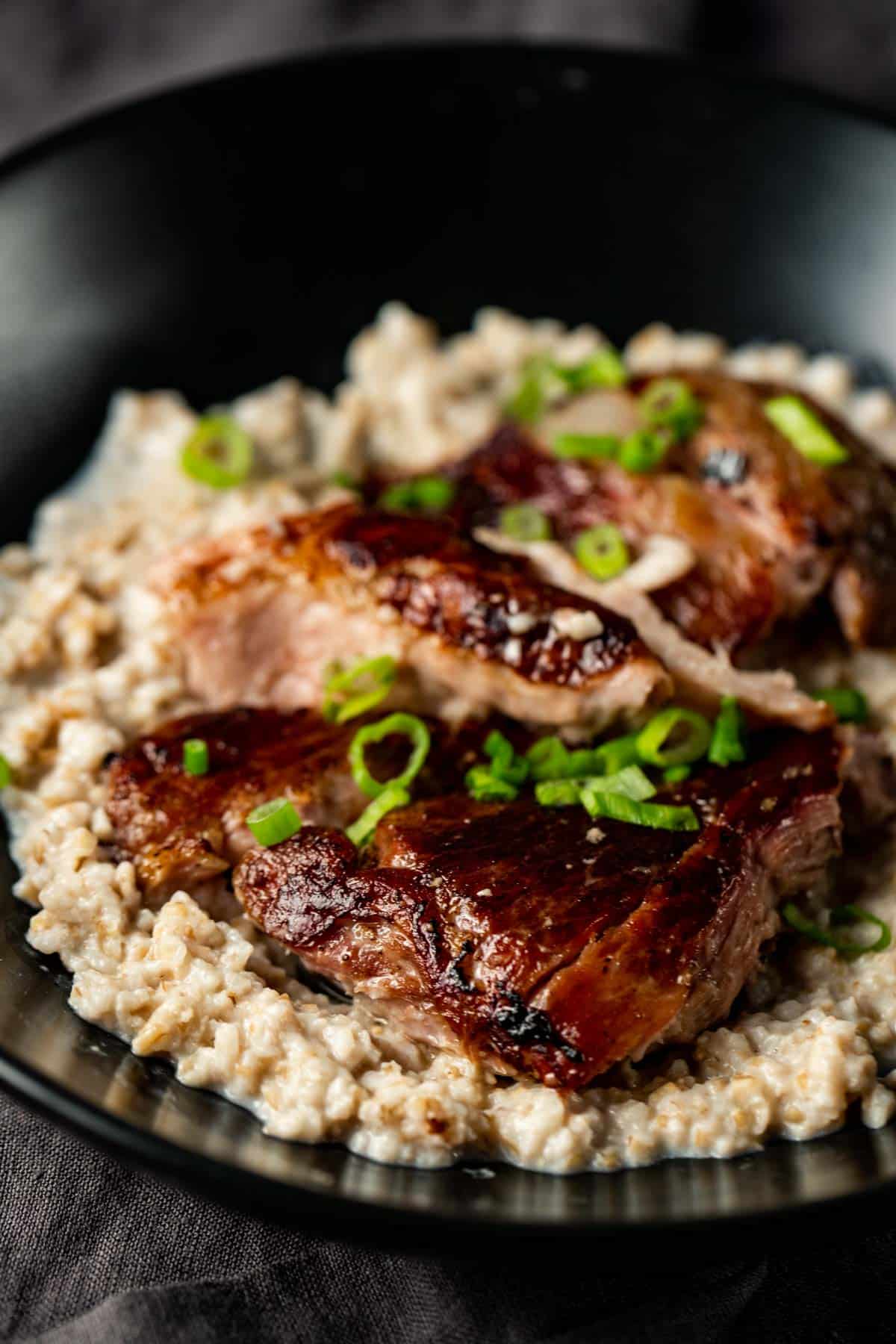
Common questions
Dry brining, or salting the pork and letting it sit uncovered in the fridge, is a great way to ensure the pork retains moisture and seals in juices. It also helps form a crispy crust when browned at the end.
The recipe calls for cooking the pork shoulder at 158F degrees. This will result in a tender yet shreddable texture. If you want the pork to be a fall apart texture for pulled pork, you can increase the temperature to 165F degrees. For a texture that’s more sliceable, reduce the temperature to 145F degrees.
Yes, you can sous vide frozen pork shoulder. Since we’re already cooking low and slow for 24-28 hours, there’s no need to add additional cooking time. With that said, I like to start with fresh or thawed pork shoulder as this works best for the dry brining process.
There are so many options! You can serve it on hamburger buns or tacos like you would with pulled pork. We like to serve it with Instant Pot wild rice or truffle mashed potatoes with a side of Instant Pot carrots. Then, we drizzle the cooking liquid over everything. It’s so good!
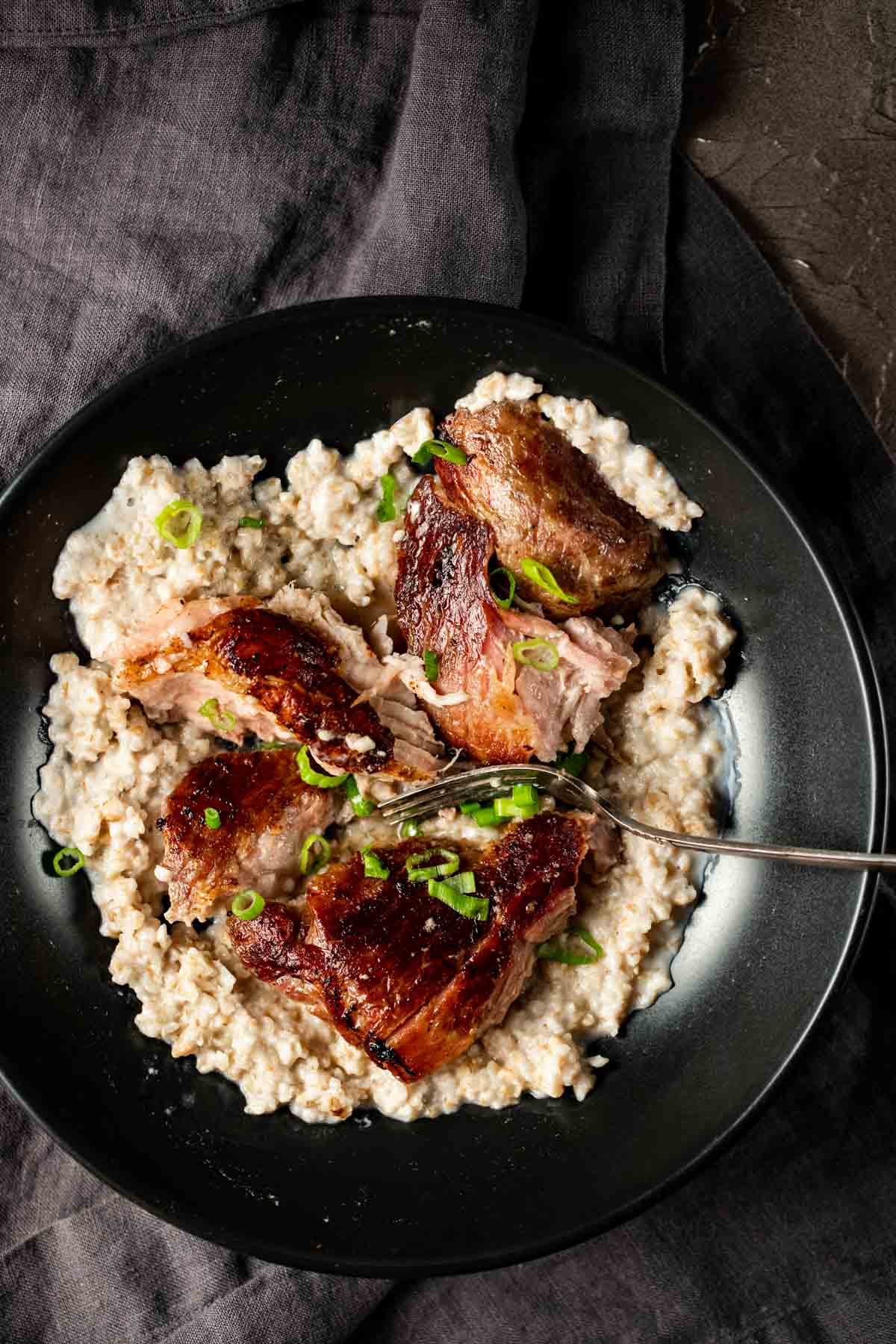
Storage instructions
Leftover pork shoulder can be stored in an airtight container in the fridge for 3-4 days or in the freezer for up to 3 months.
To reheat, place the pork in the oven with some water or broth and heat it on a low temperature. This will help prevent it from drying out. If your pork is frozen, let it thaw in the fridge before reheating.
More sous vide recipes
If you love this recipe, please leave a star rating and a comment below and let us know your favorite thing about it. We'd also love to connect on Instagram! Follow us at @went_here_8_this for awesome recipes and all sorts of fun food stuff 🙂
Recipe

Sous Vide Pork Shoulder
Ingredients
- 3-5 pound pork shoulder butt roast
- 1 tablespoon salt
- 3 garlic cloves smashed
- ¼ cup white wine
- 2 tablespoons coconut cream
- 2 bay leafs
- 2 teaspoons lemon zest
- 2 teaspoons grated ginger
- ½ onion chopped
- 1 tablespoon brown sugar
- 3 sprigs fresh thyme
Instructions
- Rub the pork with salt and let it sit, uncovered, in the fridge overnight.
- Heat a sous vide water bath to 158F degrees.
- Place the pork in a vacuum seal bag with the remaining ingredients. Seal the bag.
- Cook for 24-28 hours.
- Remove from bag, reserving bag juice, and pull/shred into chunks.
- If you want a browned crust, you can brown the outside of the pork in oil over medium high heat for 1 minute per side.
- Serve drizzled with the bag juice (optional) over rice, polenta, potatoes, etc. Also great served on a sandwich or as tacos.
Expert Tips:
- Pork shoulders can be large, so you’ll want to buy one that fits in your water bath.
- Keeping bacteria out of the sealable bag is essential, so make sure you properly remove the air when you seal the bag.
- If air gets in the bag as the pork shoulder cooks, which may happen over such a long cooking time, just open the bag, let the air out and reseal it.
- If the pork shoulder starts to float in the water bath, use something heavy to weigh it down. I like to use a sous vide sinker weight.
- As the pork cooks for 24-28 hours, water may start to evaporate from the water bath. If this happens, just top up the bath with more water.
- While the pork is fully cooked when it comes out of the water bath, you may want to brown it to form a crust. Be sure to do this for just 1 minute per side so the pork doesn’t start to dry out.
Nutrition
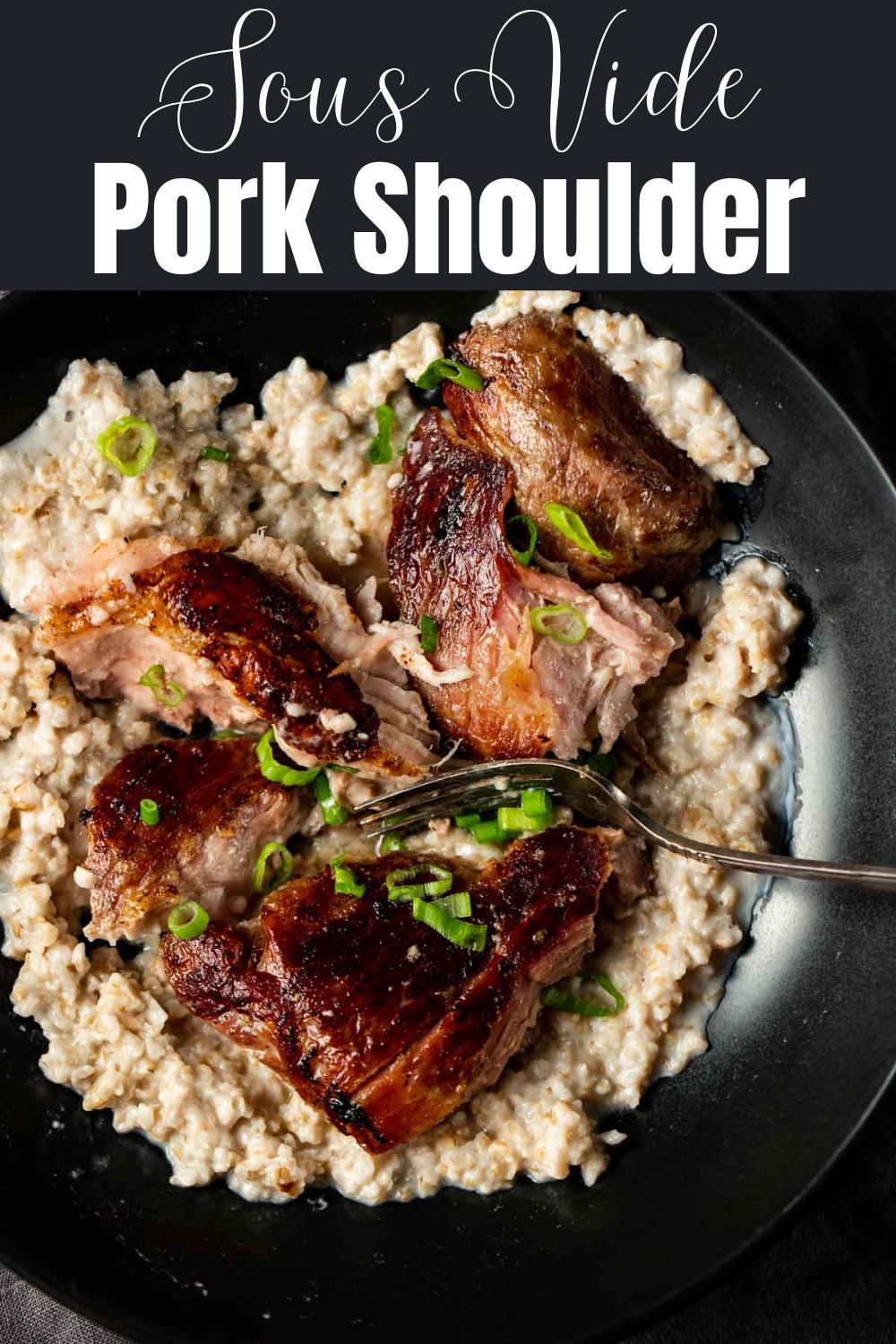


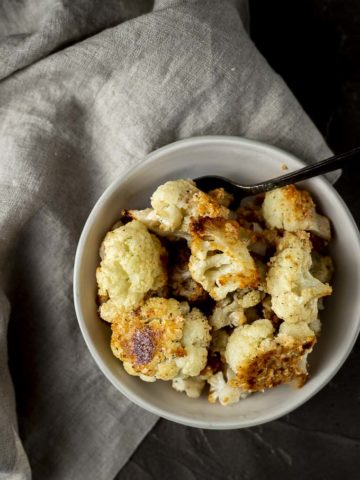

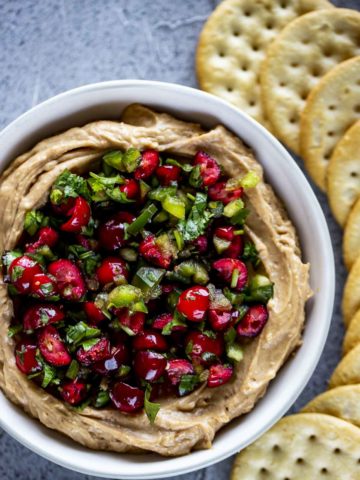

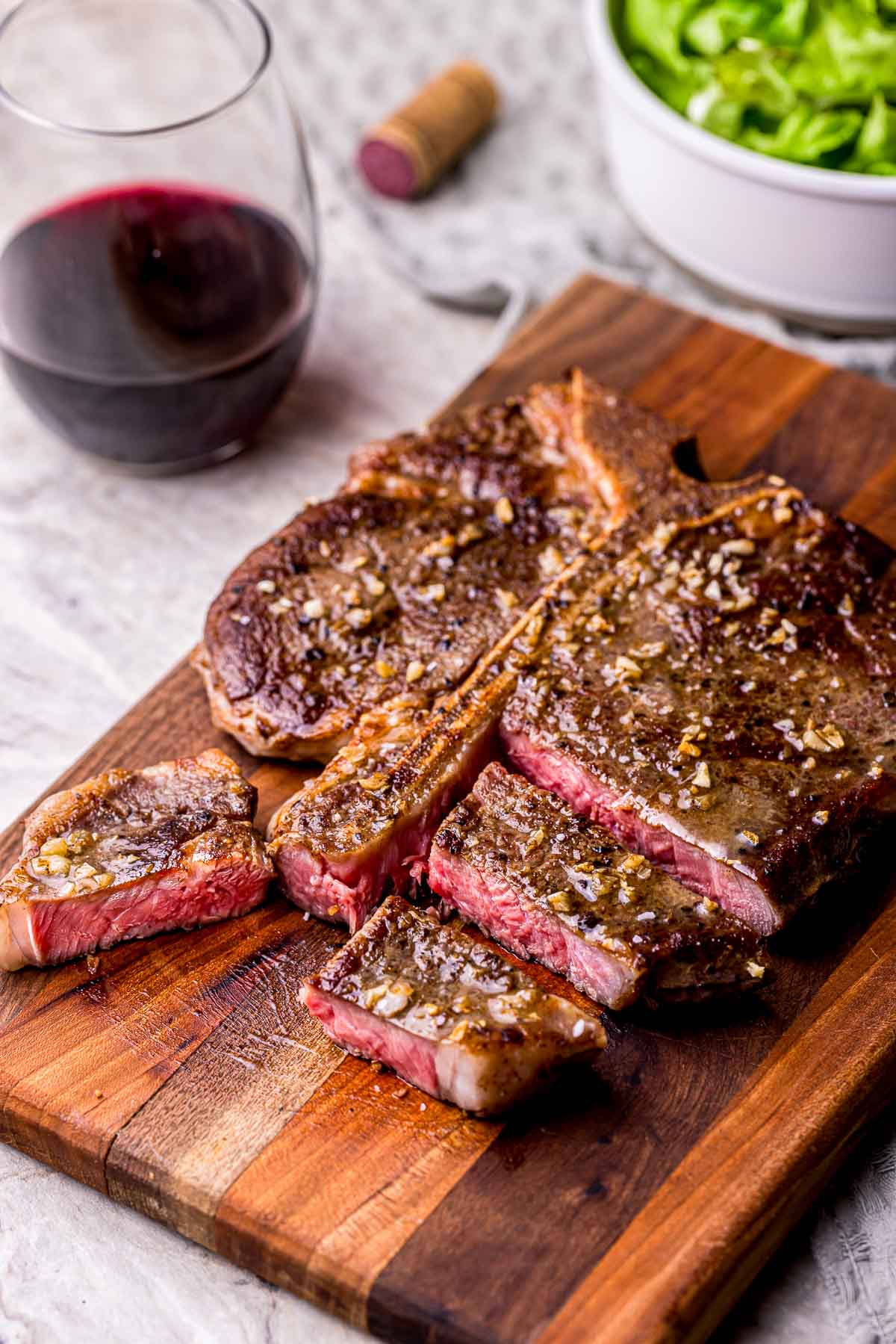
Nany
This was ultra easy and came out good, but I actually thought it was a touch dry. We had it in tacos and it was great that way!
Danielle
I'm so sorry you thought it was dry - I'm glad you were able to use it in tacos!
Amanda
Loved how tender this came out. I was skeptical that it would be because it felt hard when it came out, but really fell apart once the bag was open. Delicious!
Danielle
It really comes out nice and tender!